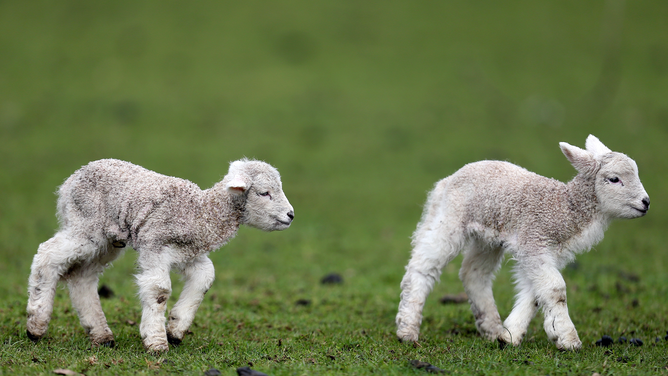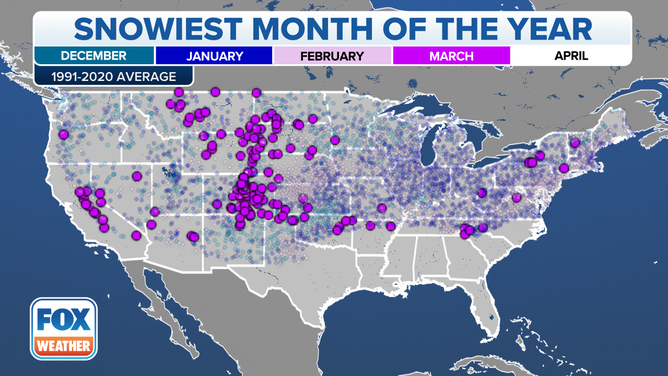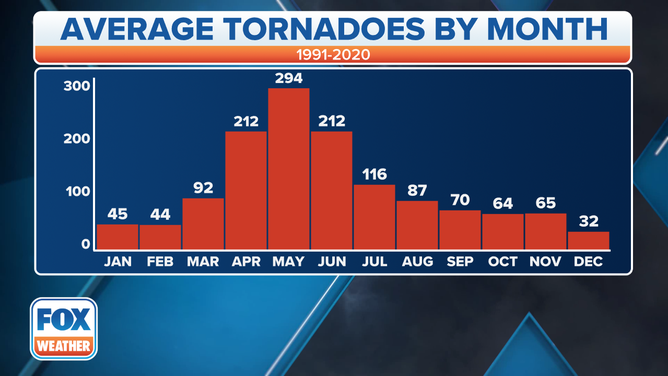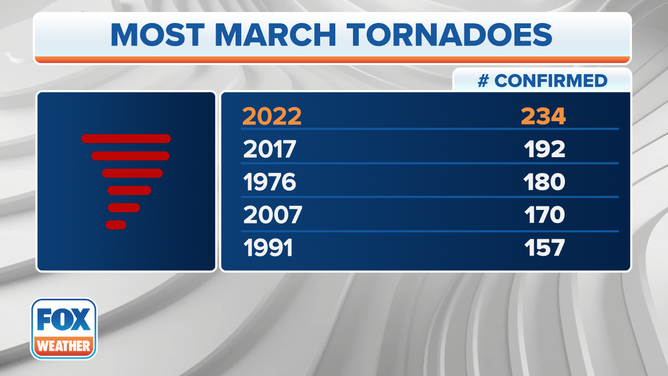Does March really come in like a lion and go out like a lamb?
According to the Farmers' Almanac, the weather folklore came from people far back in history who believed that evil spirits could affect the weather, so they were careful with what they said and did as not to annoy those spirits.
Explained: What is daylight saving time and why we turn our clocks back
Daylight saving time, or DST, allows for an extra hour of light in the evening during the warmer months.
As the old saying goes, March comes in like a lion and goes out like a lamb.
But is it really true?
The beginning of March looks very active as the FOX Forecast Center tracks a potent storm system expected to move across the country later this week.
As it does, a multiday severe weather outbreak is expected in the South, while parts of the Northeast can expect to see heavy snow.
Of course, it's still too early to tell if the U.S. can expect to see a more calm weather pattern at the end of March.
Where does the saying ‘In like a lion, out like a lamb’ come from?

A lion yawns on July 19, 2010 in the Edeni Game Reserve, South Africa. Edeni is a 21,000 acre wilderness area with an abundance of game and birdlife located near Kruger National Park in South Africa.
(Cameron Spencer / Getty Images)
According to the Farmers' Almanac, the weather folklore came from people far back in history who believed that evil spirits could affect the weather, so they were careful with what they said and did as not to annoy those spirits.
They also believed there needed to be a balance between life and the weather, so if the month started out rough (like a lion), they should expect to see much calmer weather at the end of the month (out like a lamb).
‘IT’S A GULLY-WASHER' AND OTHER WAYS SOME PEOPLE SAY, ‘IT’S RAINING'
March is typically a turbulent month of weather as the cold winter ends and the warm spring begins. This can create weather extremes such as major snowstorms and severe weather.
While it won't officially be spring for another few weeks, meteorological spring begins on March 1.
What does data say about the saying?

FILE - Auckland welcomes new born lambs at Cornwall Park on August 6, 2014 in Auckland, New Zealand.
(Jason Oxenham / Getty Images)
FOX Weather looked at 10 years of weather data from the first week of March and the last week of March for reports of severe weather, snow and even high-wind events.
"Severe weather outbreaks were really the determining factor here," said FOX Weather senior weather data specialist Shane Brown. "2019 was the only year that came in like a lion and went out like a lamb in the past 10 years."
On Mach 3, 2019, a severe weather outbreak spawned 70 tornadoes across the South.
HOW ACCURATE IS PUNXSUTAWNEY PHIL?
"In the same time, 8-12 inches of snow fell from Central Pennsylvania to New England, including New York City, with 10.4 inches in the first four days of the month," Brown said.
It was the complete opposite weather-wise at the end of the month that year, according to Brown.
"No areas saw widespread disruptive snow, and there was just a smattering of hail reports in the last week (of March)," he said.
Every other year over the decade, Brown said, featured at least one severe weather outbreak during the last week of March.
"Historically speaking, an early active start of the severe weather season usually means an active year. In other words, years that kind of start active in January and February tend to stay active through March and April and don’t see any reason for that to continue," said Victor Gensini, an associate professor at Northern Illinois University’s Department of Earth, Atmosphere, and Environment. "The atmosphere to me is still very much in a La Niña and that favors increased counts across the U.S. as we continue to the early part of spring."
March’s weather has a lion reputation
With winter ending and spring beginning, March has a history of having some extreme weather events from snow to severe weather.
Severe weather events in March
Areas where we can expect to see severe weather, especially tornadoes, expand in March to cover most of the south-central and southeastern United States, according to Brown’s data.
"We also see the likelihood increase overall with a greater number of average severe weather days," he said.
Brown said he didn’t have to look back too far into previous weather data to find a recent March severe weather outbreak.
March 2022 saw the greatest number of March tornadoes on record with 234, including an EF-4 that hit near Des Moines, Iowa.
March snow

Locations where March is the snowiest month of the year.
(FOX Weather)
March is the snowiest month for a number of places in the Rocky Mountains, including Denver. Their second-largest snowstorm on record was a 31.8-inch event back on March 17, 2003.
Nor’easters aren’t that uncommon either, Brown added. There have been four notable March snowstorms, as well as other notable ones.
1993: A storm dumped snow from the shores of Louisiana to the tip of Maine.
1960: A blizzard set many long-standing records for seasonal and monthly snowfall, some of which still stand today.
2017: A storm that led to Blizzard Warnings in the Philadelphia suburbs to Boston was followed by a brutal blast of Arctic air.
1888: The Great Blizzard of 1888 is thought to be responsible for the ideation of an underground rail system in Boston and New York City after the above-ground rail service was crippled for weeks.
March flooding
Many big flood months occur during hurricane and monsoon season, but March has seen some impressive flooding events.
2019: A big warmup after a harsh winter season produced snowmelt that inundated many locations along the Missouri and Mississippi rivers.
A similar event took place in 1939 in New Hampshire and Maine.
The Los Angeles flood of 1938 led to the channeling of the Los Angeles River, which took 20 years to complete. It also led to the creation of new dams, including the Hanses, Sepulveda, Santa Fe, Whittier Narrows and Prado dams.
The Great Flood of 1913 hit the Midwest and Northeast. After that, Congress enacted the Flood Control Act of 1917, which could be thought of as being responsible for the creation of the National Flood Insurance Program and the Federal Emergency Management Agency (FEMA).





